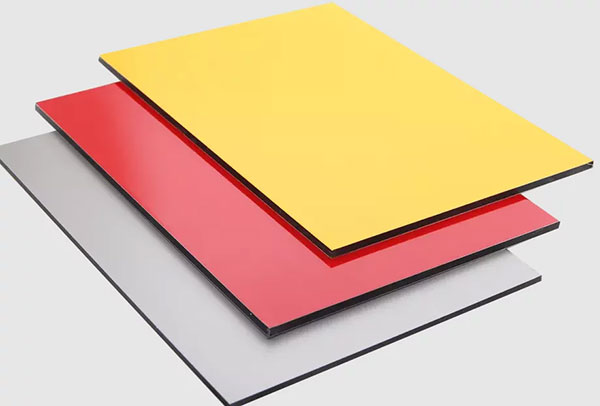

In addition, due to the thin aluminum plate, the interlayer of this composite panel is easy to expand when heated locally, which causes the aluminum plate to bulge outward. From the point of view of lightning protection of curtain wall, the aluminum composite panel is formed by pressure bonding of two layers of 0.5mm thick aluminum sheets and polyethylene. Polyethylene is a poor conductor, and the two aluminum sheets are in an insulated state. Although the inner layer is provided with an aluminum alloy subframe during the manufacturing of the composite aluminum sheet, rivets and the four sides of the aluminum composite sheet is fixedly connected through bending. Because the riveting surface is too small, and more importantly, the 0.5mm aluminum sheet is too thin, in case of lightning, the large lightning current will break through the 0.5mm aluminum sheet when the curtain wall sheet is wound in the lateral development of the building, and the strong current is difficult to ground through the composite panel to cause the building to be struck by lightning.
Looking at the fabrication and installation of the aluminum composite panel, the fabrication of the aluminum composite panel comprises the following steps: firstly, grooving the four sides of the composite panel, cutting off an aluminum plate with a certain width and one side and a plastic layer, leaving only an outer aluminum plate with a thickness of 0.5mm, bending the four sides into a rectangle at an angle of 90 degrees, then manufacturing a rectangular sub-frame with the same size from aluminum material and placing the rectangular sub-frame into a rectangular groove of the aluminum-plastic plate, gluing the back surface of the aluminum-plastic plate to the bottom surface of the sub-frame, fixing the bent four sides of the composite panel to the four sides of the sub-frame by tension riveting, and gluing one to several aluminum reinforcement bars to the middle of At present, most installation and manufacturing units are not manufactured according to the above-mentioned method, but the upper edge of the aluminum composite panel is bent into a 90-degree angle after being slotted, and only four folded edges of the composite panel are fixed with angle aluminum. In this way, the dead weight of the plate surface and any external force and any load borne by the plate surface is borne by 0.5mm aluminum plates on four sides, so that the safety is small. Any curtain wall is subject to different positive and negative wind loads at any time, and 0.5mm on the four sides of the panel is easy to break. This phenomenon has appeared in most projects. Therefore, aluminum alloy auxiliary frames and reinforcing ribs must be added to make aluminum-plastic composite curtain wall.
Name: Amanda Guan
Mobile:+86 155 4225 6990
Tel:+86 137 6167 6013
Whatsapp:+86 137 6167 6013
Email:gwamanda@126.com
Add:No 110-15, Wanggang street, Yuhong district, Shenyang, China